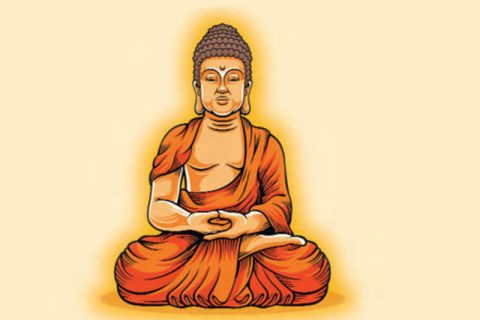Lessons To Learn From Your Past

Most of the time it is impossible to prove everything scientifically. However, we need an effort to connect all possible variables together to reach some conclusion. We need to gather information from history, implement or test in present and forecast for the future. I went through the history of all pandemic in the world. I found three major bubonic plague pandemics Spanish flu and some human Coronavirus disasters which are the greatest natural disasters of all time.
Bubonic plague
First 541CE it killed 40 percent of the capital city of the Roman Empire’s population and a quarter of the population of the eastern Mediterranean. Second, 664 smaller outbreaks occurred across Europe until 750 when the disease disappeared. Third, in 1348 the plague erupted again in Europe, It is known as The Black Death.
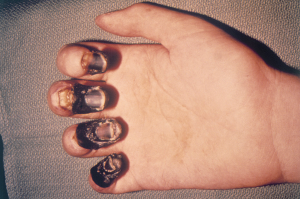
The Plague was originated on rat and Fleas transmitted to a human. The pandemic became the deadliest event in human history, killing a quarter of the people in Europe. In October 2010, medical geneticists suggested that all three of the great waves of the plague originated in China and spread rapidly across Europe.
It reached Sicily in October 1347 and form Italy it spread rapidly across Europe. It is known as Back Death in human history. The ‘Black Death’ of the 14th century killed a quarter of Europe’s population.
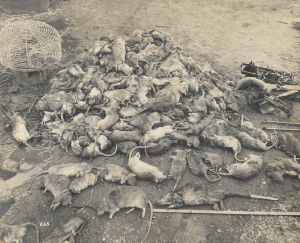
Australia was one of the fortunate countries where the first case of plague was reported four-century latter in January 1900. The Plague was originated on rat and Fleas transmitted to a human. So more than 108,000 rats were killed by the Australian government and there are no counted numbers killed by private companies and individuals.
As Australia itself an Island it is very rare to outbreaks disease which originated overseas unless we cross the level of stupidity.
Spanish flu
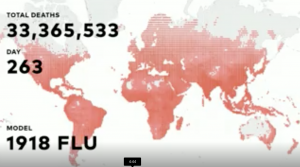
In 15th-century Italy, an upper respiratory infection was considered to be ‘influenced’ by the stars, thereby giving the disease its name. In 1980 Spanish flu first reported in Spain so it called Spanish flue. It was believed that sick war persons were super-spreaders of that flu.
Although the death toll attributed to the Spanish flu is often estimated at 20 million to 50 million victims worldwide, other estimates run as high as 100 million victims—around 3 percent of the world’s population.
By the summer of 1919, the flu pandemic came to an end, as those that were infected either died or developed an immunity. Almost 90 years later, in 2008, researchers announced they’d discovered what made the 1918 flu so deadly: A group of three genes enabled the virus to weaken a victim’s bronchial tubes and lungs and clear the way for bacterial pneumonia.
Despite a swift quarantine response in October 1918, cases of Spanish flu began to appear in Australia in early 1919. About 40 percent of the population fell ill and around 15,000 died as the virus spread through Australia.
Human Coronavirus
Human Coronavirus has known since the 1960s. But only rarely has it garnered wider recognition. In 2003, when the severe acute respiratory syndrome Coronavirus (SARS-CoV) caused an outbreak of the disease severe acute respiratory syndrome (SARS) in mainland China and Hong Kong.
In 2012, when the Middle East respiratory syndrome Coronavirus (MERS-CoV) led to an outbreak of the Middle East respiratory syndrome (MERS) in the Middle East and Korea. Both Coronaviruses were new to science and the great news was both outbreaks were contained. It is still unknown how it contained. Yes, one factor is human intervention but there are still unknown natural circumstances that put hold this outbreak.
After the above 2 outbreaks critics, investors, entrepreneurs, and philanthropists warns the world to be prepared to combat virus pandemic. They try to lighten world leaders to spend our resources to develop immune to protect from virus-like Human corona rather than invention on mass destructing weapons. one of them is Bill Gates. Even the Contagion movie was made in 2011.
Now we are facing severe acute respiratory syndrome Coronavirus-2 (SARS-CoV-2), which is all known as COVID-19. Scientists are aware that SARS-CoV-2 belongs to a family of viruses. They know a great deal about human Coronaviruses. There are approved more than 40 Coronaviruses.The majority of these viruses infect animals and only seven infect Humans. Four out of seven are community-acquired and have circulated through the human for a very long time with a low mortality rate. Three out of Seven namely – SARS-CoV, MERS-CoV, and SARS-CoV-2 Worrying us with a high mortality rate.
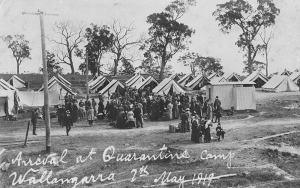
History shows in every pandemic Australian was saved by its Isolation from other world and the government’s quick response. In the first nine months of 1900 when Black death is landed in Australia, 1759 people were quarantined. Initially, the quarantine period was 10 days but this was eventually reduced to five. Of these only 263 were confirmed cases.
After outbreaks of Spanish flue in October 1918, with a swift quarantine response of the Australian government, only about 40 percent of the population fell ill and around 15,000 died from Spanish flu. The number is very low compare to other countries. From historical evidence it is proven that to stop outbreaks, quarantine and isolation is the most important measure to impose and follow which apply to COVID-19 too .
———————————————————————————————————————————–
⇒ Note from the writer: This article is not my own first-hand lab research. I am not a medical professional and a virus specialist.
I just use my research approach to find some information and compile it together.
References:
• Various articles and newspapers
• Sydney Morning Herald, 7 March 1900
• Sydney Almanack of 1834.
• National Museum Australia
Photo References:
• A hand showing how acral gangrene of the fingers due to bubonic plague causes the skin and flesh to die
• Rats caught in Sydney
• Bill Gates TED Talk speech
• Influenza quarantine camp setup at Wallangarra, Queensland, 1919. John Oxley Library, State Library of Queensland 67478.
————————————————————————————————————————————–

काठमाडौं– फेशन नेटवर्क नेपालले नेपालमै पहिलो पटक तीन दिने ‘नेपाल फेसन फेस्टिभल’...

काठमाडौं- कक्षा–१२ को परीक्षा आजदेखि देशभर एकैसाथ सुरु हुँदैछ । राष्ट्रिय परीक्षा...

काठमाडौं– नक्कली भुटानी शरणार्थी प्रकरणमा थुनामा रहेका निलम्बित सांसद टोपबहादुर रायमाझीलाई सर्वोच्च...

काठमाडौं- वैशाख १२ को विनाशकारी गोरखा भूकम्पको आज ९ वर्ष पूरा भएको...

काठमाडौं– वेस्ट इन्डिजले नेपाल टूरमा आउने ए टिमको छनौट गरेको छ ।...

Find your perfect big booty match today Looking for a big booty date?...

काठमाडौं– फेशन नेटवर्क नेपालले नेपालमै पहिलो पटक तीन दिने ‘नेपाल फेसन फेस्टिभल’...

काठमाडौं- कक्षा–१२ को परीक्षा आजदेखि देशभर एकैसाथ सुरु हुँदैछ । राष्ट्रिय परीक्षा...

Kann dein Verbindung Dysfunktionell fantastisch? Plain ol ‘beeinträchtigt Verbindungen...

ein Kuss ist mehr als Drücken Mund. Deshalb behauptet Sheril...



